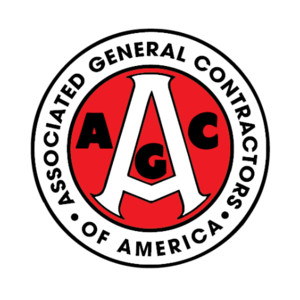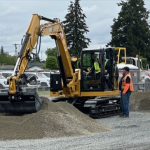What’s in store for the U.S. construction industry in 2022?
 The construction industry has definitely had more than its share of significant challenges over the past year due to the global pandemic. Aggravated by the COVID-19 outbreak, two major challenges remain as we head into 2022. Labor and supply shortages continue to tax an industry that has continued to adapt to an unprecedented and unpredictable worldwide threat.
The construction industry has definitely had more than its share of significant challenges over the past year due to the global pandemic. Aggravated by the COVID-19 outbreak, two major challenges remain as we head into 2022. Labor and supply shortages continue to tax an industry that has continued to adapt to an unprecedented and unpredictable worldwide threat.
Yet there is hope for a better year in 2022 and beyond after the passage of the infrastructure bill. “These new infrastructure investments will provide a needed boost for the construction industry while making our economy more efficient,” noted Stephen E. Sandherr, CEO of the AGC.
Yet significant issues remain as the industry enters a new year. More than 60% of contractors, for example, say that the No. 1 challenge of 2021 was availability, scarcity and the subsequently higher prices of critical building products/materials. According to the U.S. Chamber of Commerce Commercial Construction Index, 93% of U.S. contractors are still facing at least one type of materials shortage. Some reports suggest that the construction industry supply problem could ease over the coming year, even if only slightly, bringing down material prices. Lumber prices already have fallen back to pre-pandemic levels, but shortages of other materials, such as steel and cement, are causing significant operating challenges.
The other most pressing concern remains the shortage of skilled workers. According to the U.S. Chamber of Commerce, 55% of U.S. contractors are currently reporting high levels of difficulty finding skilled workers, a pre-pandemic problem that became more pronounced over the past two years. More than 40% of contractors in the chamber’s report said they have had to turn down work due to shortages of workers.
As a result of the scarcity of workers, only 16 states and the District of Columbia have added construction jobs since just before the start of the pandemic in February 2020, according to AGC data. “Although activity picked up in most states in October, construction employment remains below pre-pandemic levels in two out of three states,” Ken Simonson, the association’s chief economist said. “The record number of job openings shows contractors are eager to hire more workers but can’t find enough qualified applicants.”
The labor shortages have, of course, been pushing wages higher. According to the chamber report, 80% of contractors say they have had to increase compensation over the past six months in order to recruit and retain quality employees.
So where does the industry go from here? Contractors are cautiously optimistic. Confidence in the overall economy and construction industry is increasing and is higher than it was at the beginning of 2021, although it’s still significantly below pre-pandemic levels. Revenue expectations are slightly more optimistic than they were a year ago and contractors generally believe conditions will improve in the coming year.
Project delays due to the pandemic continue to decline nationwide. While there is no clear consensus of what’s to come in 2022, many contractors are hopeful that the new year will offer some amount of relief from the pressures and challenges that the pandemic put in place two years ago.








